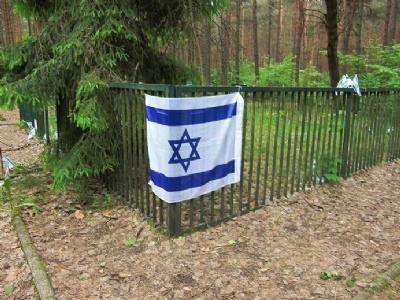Lopuchowo
About fourty kilometres west of Bialystok in northeastern Poland, there is a small town called Tykocin. The city had a strong Jewish tradition and at the time of the attack by the Germans on Soviet union, June, 1941, lived about 1500 jews in Tykocin (Tykocin belonged to the part of Poland occupied by Soviet Union between September 1939 and June 1941). Shortly after the occupation, pogroms were carried out against the Jewish population and the property of the Jews was plundered and anti-Semitic regulations were immediately introduced. On August 25, 1941, the city ordered about 1,500 Jews to appear in the square under the pretext that they would be transported further. On the square, the Nazis conducted a selection and about 1,400 Jews were seperated from the others. These selected were taken to a forest outside a small village called Lopuchowo, about four kilometers southwest of Tykocin. There the Jews were murdered and buried in mass graves. A few managed to escape but were captured the very next day and shot by Polish police. Few managed to escape to Bialystok ghetto, but there they eventually fell victim to Nazi murderous actions.
Current status: Monument (2011).
Location: 53°10'44.93"N 22°41'41.68"E
Get there: Car.
Follow up in books: Arad, Yitzhak: Holocaust in the Soviet union (2009).



The site is located in the forest along road 671 (Sokolowska) about five kilometers southwest of Tykocin. After the war, a few Jews returned to Tycocin but were immediately subjected to pogroms and emigrated to Israel. Tycocin has nevertheless preserved part of its Jewish tradition and the city’s synagogue is still in use and contains a small museum. The old settlement has also been preserved in a unique way in comparison with other Jewish communities in Poland. Most communities were destroyed by the Nazis or simply disappeared after the war when the jews were gone.